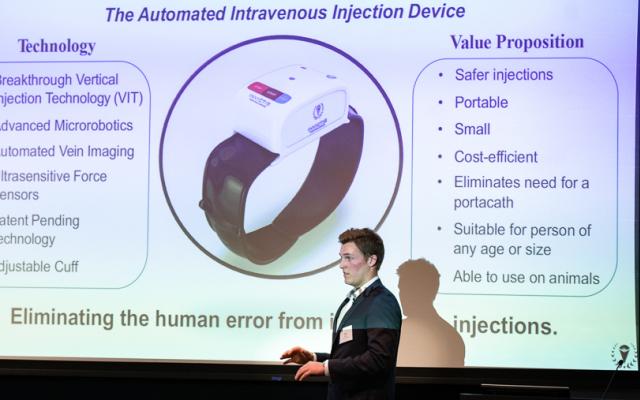
In the midst of an evolving technological world, venipuncture for the direct injection of medication has not changed since the practice was first developed in the 1830’s despite the inefficiency, unreliability, and potential harm that can arise. Under the most ideal conditions, it is difficult even for a trained nurse to access a vein consistently due to practical limitations of human motor skills, changing variables from person to person such as vein size, shape, strength, health, etc., as well as basic human error. Of course, under non-ideal conditions, the risks are even greater.
Two particularly important spaces where the Invictis VITA would revolutionize the market space are hemophilia and chemotherapy. Hemophiliacs require daily IV injections, and either a trained nurse must come to your house, you must travel to a treatment center, or you must do the injection yourself. Even in a hospital setting, around 25% of first stick IV infusion attempts are unsuccessful, illustrating the difficulty of injecting a vein in small or weakened patients. It is inconceivable that in this age of advanced technology we rely on such outdated and inefficient methods.
The use of advanced robotics offers a solution to the problems associated with venipuncture yet to date no such products are widely available in the market. Our device seeks to overcome these challenges by changing the fundamental method of injection in a simple and effective way. Similar to how the EpiPen changed the landscape on how to deliver epinephrine by making the procedure virtually foolproof, our device is poised to change the landscape of how IV injections are administered by automating the process with cost-effective and accessible technology.


